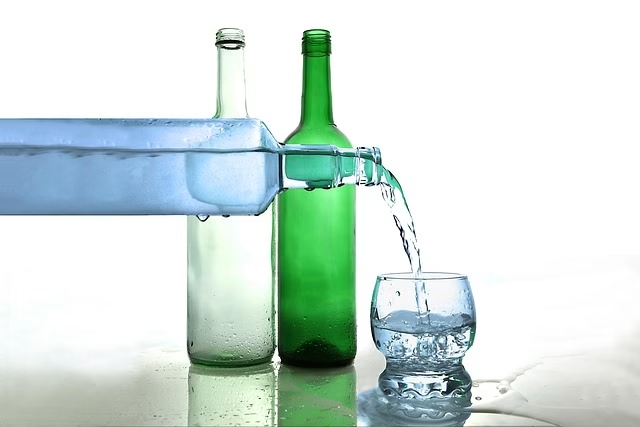Fortunately, with the right hydration tips for summer, you can stay energized and safe all season long. However, many people underestimate how quickly fluids deplete in the heat, leading to fatigue, headaches, and even serious health risks.
This guide includes research-based tips such as:
✔ How to determine your own custom water needs
✔ Natural alternatives to sugary sports drinks
✔ Key signs of dehydration you might miss
✔ The hydration-boosting foods you should eat every day
Whether you are an athlete, a parent, or you just want to make sure that you are feeling your best, summer hydration tips will keep you cool and fresh.
Whether you are an athlete a parent or you just want to make sure that you are feeling your best, summer hydration tips will keep you cool and fresh.
Hydration Tips for Summer: 15 Essential Strategies
1. Calculate Your Personal Water Needs
1. Calculate Your Personal Water Needs
Blast the antiquated “8 glasses a day” rule. Your individual hydration requirements depend on the size of your body, your level of physical activity, and the temperature of your environment. To find a more specific response, here it is:
Take your weight (in pounds) / 2 = Daily ounces of water
So if you weigh 160 pounds, that means you should aim to drink at least 80 oz of water a day. Moreover, if you’re out exercising, sweating, or just hanging out in the heat for a long period of time, increase accordingly.
2. Drink Before You Feel Thirsty
Thirst is a delayed signal. In other words, by the time you feel thirsty, you are already behind on fluids.
Here’s how to stay ahead:
- Start your day by drinking 16 oz of water to replenish overnight losses.
- Then, consider setting an hourly reminder to keep hydration top of mind—especially if you’ll be outdoors.
- Alternatively, try using a time-marked or measured bottle to pace your intake throughout the day.
These small habits can help you stay consistently hydrated without feeling like it’s a chore.
These small habits can help you stay consistently hydrated without feeling like it’s a chore.
3. Select natural sources of electrolytes.
Sports drinks offer a better way to hydrate, but many are filled with sugar and artificial ingredients. Go for the much more natural options instead:
- Coconut water: High in potassium and so refreshing to drink!
- Lemonade – Fresh lemon juice, honey, sea salt
- Herbal iced teas — Mint, hibiscus or chamomile You would have variety and taste.
Here are some bevvies that will help you hydrate and replace electrolytes — without the sugar crash.
4. Incorporate Hydrating Foods
And while there are foods that act as a natural water source for the body, here are the top picks:
- Cucumber (96% Water) Serve in salads or eat as a snack to keep you cool.
- Watermelon – 92% (yum and yum again and is full of lycopene that provides a natural sun block to protect skin from harmful UV rays)
- Bell peppers (92%) – Crisp, colorful, and full of vitamin C
Tip: Round out your meal with a watermelon-feta salad or a cucumber-yogurt dip for that juicy element.
5. Limit Dehydrating Beverages
Some drinks actually pull water out of your system:
- Alcohol- Alcohol can cause you to secrete more urine and can interfere with heat regulation.
- Caffeine-containing beverages – May have mild diuretic effects when taken in excess
- Sweetened Sodas – Can cause extreme highs and then sudden drops in blood sugar due to the diuretic effect of caffeine.
If you enjoy these beverages, try to match each serving with a glass of water to balance your hydration.
6. Recognize Hidden Dehydration Signs
Thirst isn’t the only clue that you’re dehydrated. Look out for:
- Dark yellow urine – Aim for a pale straw color
- Dry lips or flaky skin
- Unexplained fatigue, headaches, or irritability
A simple hydration test: press on your fingernail and watch how fast color returns. Slow capillary refill can be a subtle sign of dehydration.
Targeted Hydration Strategies for Specific Groups
For Outdoor Enthusiasts:
- Freeze water bottles overnight for refreshing cold water on the go
- Wear moisture-wicking clothing to stay cool and reduce sweat loss
For Parents:
- Use colorful, fun-shaped ice cubes with fruit inside to encourage kids to drink more
- Pack hydrating snacks like grapes, melon cubes, or celery sticks for picnics and outings
For Older Adults:
- Set phone or watch reminders—as thirst perception diminishes with age
- Include hydrating soups, herbal teas, or fruit smoothies in meals
Debunking Common Hydration Myth
There’s plenty of misinformation floating around about hydration. Let’s clear up two big ones:
❌ “Clear urine means optimal hydration”
Not necessarily. Very clear urine could actually signal overhydration. Aim for a pale yellow color—that’s the sweet spot.
❌ “You can’t drink too much water”
You can. Overhydration, or hyponatremia, happens when excess water dilutes your sodium levels, which can be dangerous. Balance is key.
Final Thoughts: Hydrate Smarter This Summer
Staying hydrated in summer doesn’t require drastic lifestyle changes. It’s about consistency and awareness. Start by adopting two or three of these hydration tips for summer—like carrying a reusable water bottle, swapping out soda for coconut water, or adding more water-rich fruits to your meals.
Over time, these small, intentional habits will become second nature. You’ll feel more energized, think more clearly, and protect your body from heat-related issues.
So, before you step outside this summer, ask yourself: Have I hydrated today? Your body will thank you for it.

